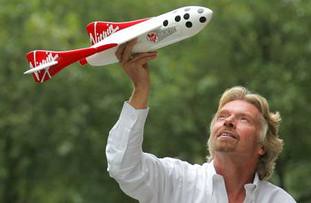Ballistic Re-entry for Muszaphar
Monday, October 22nd, 2007Ripping through the atmosphere, landing in Kazakhstan. Just a little off target, via SpaceFlightNow.com:
The Soyuz TMA-10 spacecraft landed in Kazakhstan today, bringing outgoing space station commander Fyodor Yurchikhin, flight engineer Oleg Kotov and Malaysia’s first man in space, Sheikh Muszaphar Shukor, safely back to Earth after a steeper-than-usual descent that left the ship well short of its intended landing site.
The spacecraft undocked from the aft port of the Russian Zvezda command module around 3:14 a.m. EDT. Yurchikhin fired the capsule’s braking rockets for four minutes beginning at 5:47 a.m. to begin the hourlong descent. At 6:14 a.m., the craft reached the discernible atmosphere at an altitude of 400,000 feet.
Plunging back to Earth from west to east over central Kazakhstan, the flight plan called for a landing near the town of Arkalyk. But for reasons yet to be explained, the Soyuz flew a steeper-than-planned trajectory and landed short of the intended touchdown point, subjecting the crew to higher-than-normal braking forces. It was the first "ballistic" re-entry since the Soyuz TMA-1 spacecraft returned on May 3, 2003, with the space station’s sixth full time crew.
Landing some 211 miles west of Arkalyk, there was no live television coverage of the landing. But NASA commentator Rob Navias, monitoring the re-entry from the Johnson Space Center’s mission control in Houston, said Russian recovery forces aboard search aircraft spotted the capsule as it descended under its main parachutes at an altitude of about 5,000 feet. Russian flight controllers said recovery crews contacted the cosmonauts during the final moments of the descent and were told the crew was in good shape.

The account, as provided by the Associated Press:
A technical glitch sent a Soyuz spacecraft on a wild ride home Sunday, forcing Malaysia’s first space traveler and two Russian cosmonauts to endure eight times the force of gravity before their capsule landed safely.
All three were fine, with medical tests showing they were not injured during the steeper-than-usual descent, Russian Space Agency chief Anatoly Perminov said at a news conference at Mission Control in Korolyov, just outside Moscow.
He said space officials and experts had "a few tense moments" but the spacecraft landed safely with the crew in good condition.
The Soyuz — with Russians Fyodor Yurchikhin and Oleg Kotov, and Malaysian Sheikh Muszaphar Shukor on board — veered off-course and touched down at 6:36 a.m. EDT, more than 200 miles west of the designated landing site on the steppes of Kazakhstan, Mission Control spokesman Valery Lyndin said.
"That meant that the crew were subjected to higher than normal gravity load on their descent," he told The Associated Press.
Soyuz crews typically must bear four times the force of gravity when the spacecraft returns to Earth. But Lyndin said the glitch meant the crew was subjected to eight times the force of gravity.
Russian teams quickly located the craft, NASA said on its Web site.
Alexei Krasnov, head of the Russian space agency’s manned space programs, said an official commission would investigate the glitch.
"It’s difficult to immediately name a specific reason behind the problem. We need to do an in-depth analysis," he said.
A similar problem occurred in May 2003 when the crew — Russian cosmonaut Nikolai Budarin and American astronauts Kenneth Bowersox and Donald Pettit — also experienced a steep, off-course landing. It then took salvage crews several hours to locate the spacecraft because of communications problems.
Yurchikhin and Kotov were returning home after a six-month stint at the international space station. Sheikh Muszaphar, a 35-year-old physician, had been at the orbital outpost since Oct. 12.
"This is a very momentous and historic occasion for Malaysia," Malaysian Deputy Prime Minister Najib Razak told reporters.
During about 10 days in space, Sheikh Muszaphar, fulfilling both his own dream of space travel and his country’s aspirations, performed experiments involving diseases and the effects of microgravity and space radiation on cells and genes.
"I am also very proud … that finally we have joined the small number of nations that have sent their sons and daughters to space," Sheikh Muszaphar wrote in his Web journal before returning to Earth.
The $25 million agreement for a Malaysian astronaut to fly to space was negotiated in 2003 along with a $900 million deal for Malaysia to buy 18 Russian fighter jets.
Back at the space station, the remaining crew — U.S. astronauts Peggy Whitson and Clayton Anderson, and cosmonaut Yuri Malenchenko — monitored the progress of the Soyuz on its return journey.
Whitson, the station’s first female commander, arrived along with Sheikh Muszaphar and Malenchenko on another Soyuz that lifted off from the Russian-leased launch facility in Kazakhstan Oct. 10.
She and Malenchenko are to spend six months in orbit, while Anderson — aboard since June — is to be replaced in the coming weeks by U.S. astronaut Daniel Tani, who is to arrive on the U.S. shuttle Discovery later this month.
The station’s new crew is to perform space walks linked in part with efforts to expand the station, which is due to add a European Space Agency module and a Japanese module in the coming months.
(Copyright 2007 by The Associated Press. All Rights Reserved.)


 For readers that haven’t established weekend plans just yet, you might want to consider a quick jaunt out to
For readers that haven’t established weekend plans just yet, you might want to consider a quick jaunt out to 
 American entrepreneur Anousheh Ansari
American entrepreneur Anousheh Ansari